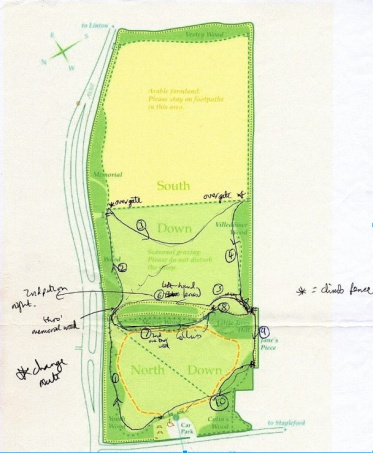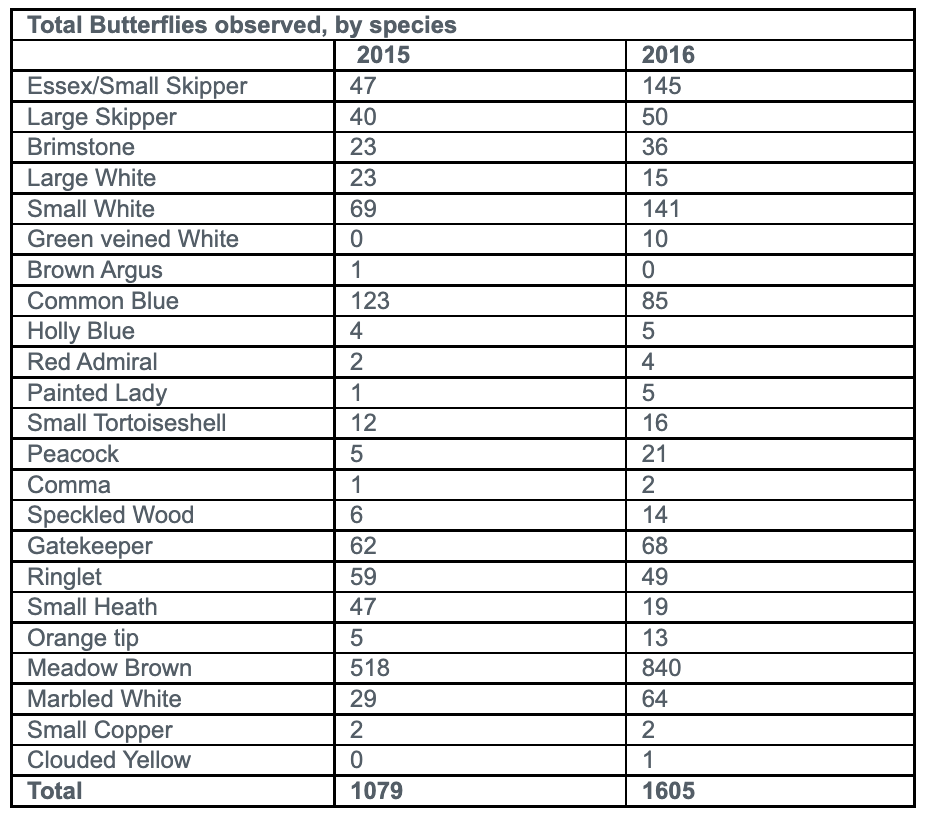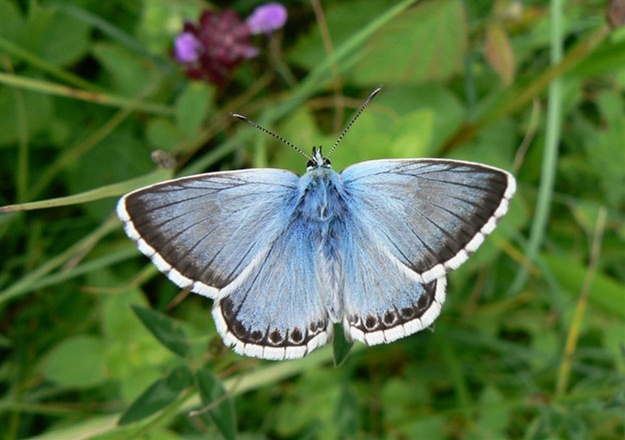The UK Butterfly Monitoring Scheme recommends a formal method for butterfly monitoring call the “Transect Method”: using this method, the same area of land is walked regularly, at a constant pace, counting what’s seen within a 5m visual square.
After Professor Colin Smith’s initial monitoring in the late 1990s, survey work was done again between 2008 and 2012 by Doug and Jenny Taylor. Then in 2015 a Friend of Magog Down called Barbara Massingham-Stubbs took on the task of continuing this monitoring.
August 2022 – The transect method described here has been updated. A new article will be written shortly by our rangers, Claire and Nick Beale, in collaboration with the current butterfly recorders.
More information on butterflies seen on Magog Down can be seen on the Butterflies, Moths and other invertebrates page.
The Transect
This is the transect route that Jon Gibbs and Barbara worked out, which was designed with the aim of trying to get a few different habitats that exist on the Down.

- Youth Wood: young trees,
- Grass Margin: south-facing, scrub hedge, short & long grass, thistles, red clover
- Paddocks: sheep-grazed, grass
- Grass Margin: north-facing, scrub hedge, short & long grass, thistles, cowslips, oxeye daisy, red clover, trefoil
- Crescent Path: short & long grass bordered by paddocks
- Middle Path: Magog Wood, mature trees
- Tree Trail: Magog Wood, young trees
- Colin’s Paddock: east-facing grassland meadow, short & long grass, wild marjoram, knapweed, ragwort
- Jane’s Piece: bare chalk path bordered by scrub and paddock
- North Down: west-facing, sloping grassland meadow
The rules followed for these surveys (as per the UK Butterfly Monitoring Scheme) are that the survey takes place weekly between April – September, spending 1 – 2 hours sometime between the hours of 10:45 to 15:45; the temperature needs to be >= 13°C, and if it’s <=17°C then there must be 60% sunshine; further, the wind speed has to be <=5 [19-24mph], at which point small trees in leaf begin to sway.
The Results
Here’s the table of results of number of butterflies observed by Barbara over the first two years of her monitoring. She notes that she saw more butterflies in total in 2016 partly because she had missed the first 7 weeks of 2015, though it had been cold and wet then anyway. But also she admits she may have got better at spotting them!

We hope that Barbara continues to enjoy monitoring the butterflies in this way, and look forward to seeing the results year on year. When will the elusive Chalkhill Blue appear on Magog Down?

